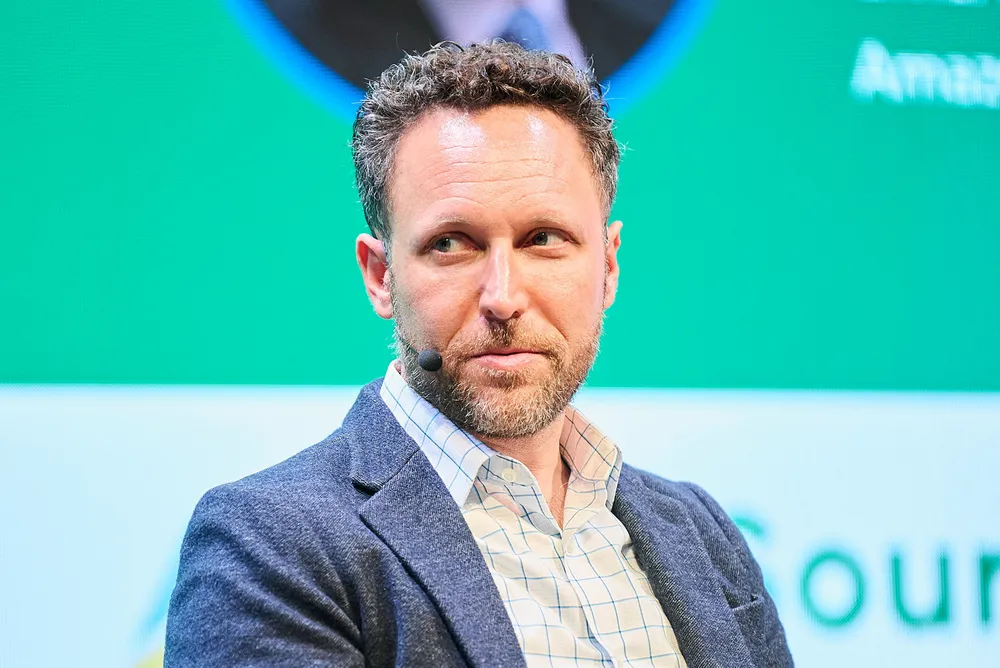Amazon exec: 'renewable energy projects aren’t meeting expectations'
Wind and solar farms are being forced offline due to lack of grid capacity, blowing holes in energy transition targets of corporate customers

Renewable energy projects are falling short of expectations for corporate power purchasers due to high levels of curtailment, says an Amazon energy executive.
The rapid rollout of wind and solar farms across Europe has resulted in record-breaking periods of negative power prices and curtailment of green assets.
This is due to renewables generation outstripping demand at certain times and in certain regions – an issue compounded by a lack of grid capacity to send power where it is needed, when it is needed.
The latest data shows there has been a “huge increase” in negative prices, said WindEurope senior advisor Marija Dabrisiute, with 1,031 hours – equivalent to 43 days – recorded in EU countries from January to August this year, tripling the rate seen in 2022.
Dabrisiute was moderating a panel at RE-Source 2024, a conference that took place last week in Amsterdam with the aim of stimulating corporates into buying more green power from developers.
The renewables sector has long argued that adding lots of wind and solar to the grid would bring down prices, said Bram Claeys, senior advisor and power team lead at the Regulatory Assistance Project, a global energy NGO. “In a way, this reduction of prices is proof of success, so we shouldn't lose that perspective.”
But it becomes a problem when developers are no longer making enough money to recoup their investments, he said. That leads to a slowdown in renewables deployment, when the opposite is needed to curb catastrophic global warming.
Research points to “three major factors” that influence price cannibalisation, said Claeys, stressing that “it’s not inevitable”.
These are the existence of “sufficient flexible resources” in the power system; a carbon price in line with climate targets; and the availability of smart support mechanisms for generators and consumers.
‘When push comes to shove, assets are being curtailed’
Jake Oster, director of energy and environment policy in the EMEA region for its data centre subsidiary Amazon Web Services, said that curtailment is something most people "don’t pay attention to" but its impacts are "widespread" and extend to buyers as well as sellers of green power.
Amazon supports the development of new renewables projects to help meet its decarbonisation targets, he said. Amazon this year hit its target of matching all electricity used across its global operations with renewable energy – seven years ahead of schedule.
Amazon helps spur new wind and solar plants to come online through Power Purchase Agreements (PPAs). Not all power from these plants goes to Amazon operations, but the projects generate “guarantees of origin”. Known as GOs, these EU documents show a facility is producing a certain amount of power and corporates use them in their net zero accounting.
Amazon expects that a project will generate a certain amount of power in a year, said Oster. “What we're seeing is that due to curtailment, those projects are not meeting those expectations.”
And when these projects are curtailed and not generating power, they are also not generating GOs, said Oster – blowing a hole in Amazon’s decarbonisation targets.
The projects are in other words “falling short.”
Focus on risk sharing a red herring
Brian Denvir, EMEA energy markets lead at fellow tech giant Google, said that year-on-year increases in negative prices area reflective of a market “telling us something is not right.”
Corporates need market mechanisms to reward them for providing flexible demand, he said. “Not all demand is flexible, but there is more flexible demand to be taken out there.”
Many markets need not just flexible demand but more demand full stop, said Denvir. It is also crucial to have “more technology inclusivity,” he added, as he often sees markets with a “saturation” of one kind of generation.
When it comes to confronting the challenge that negative prices and curtailment pose parties to PPAs, Denvir said it is important that the risks and rewards are shared fairly between developers and corporates.
Oster said that in his view focusing on risk sharing is “looking at the wrong part of the problem.”
The renewables sector shouldn’t be looking at curtailment and thinking how this can be solved through risk sharing, he said. It is essential to deal instead with the “foundational challenges” that give rise to curtailment in the first place.
“This is an overall market problem. And if what we do is we construct PPAs to work around the market problem as opposed to solving the route of the market problem, we're not actually at the solution.”
PPAs in any case don’t represent the entire market, he said. So even if developers and corporates can alleviate challenges faced by curtailment through risk sharing, “we still have to figure out a way to solve the rest of the industry.”
They are also big backers of advanced geothermal, another potential source of stable clean energy, and long-duration energy storage technologies that can smooth out peaks and troughs in wind and solar generation.
(Copyright)